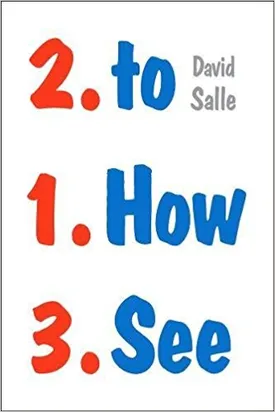How to See: Looking, Talking, and Thinking about Art by David Salle
Drawing on the work of art theorists, artists, and critics, David Salle's How to See: Looking, Talking, and Thinking about Art introduces readers to the creative act of looking and engaging with art. Salle recognizes that commentary on visual art has become increasingly technicalized, leading to a disconnect between common-sense observation and overly-complex arguments, and sets out to bridge the gap by featuring thoughtful conversations between himself and art world luminaries such as Roberta Smith, Cindy Sherman, and Wolfgang Tillmans. Through these conversations, Salle and his interlocutors explore the subtleties of art and its impact on viewers, examining issues such as aesthetics, the subjectivity of the viewer, and ways of understanding the power of art.
The book is divided into three sections - looking, talking, and thinking - and each section seeks to address a different aspect of art appreciation. In the first section, Salle invites readers to explore the act of looking at art, and delves into the importance of looking closely in order to appreciate the subtleties of a work of art. Salle draws on the work of John Berger and his notion of 'ways of seeing', emphasizing the importance of developing a critical eye in order to understand the connections between a piece of artwork and its creator. He also notes that one of the main reasons for looking closely at a piece of artwork is to develop an emotional connection with the work, acknowledging that art awakens an emotional response in viewers that is intrinsically tied to their individual experiences.
In the second section of the book, Salle encourages readers to get involved in the act of talking about art and to move beyond the surface level of observations. Through conversations with experts such as Roberta Smith and Cindy Sherman, Salle encourages readers to inquire further and explore the complexities of individual works of art. The conversations include discussions of symbolism, techniques, and the impact of context on a piece of artwork, while also considering the often subjective nature of individual aesthetic judgments.
Finally, in the third section of the book Salle delves into the process of thinking about art and looking for connections between individual pieces and larger trends within the history of art. From interpreting the form of ancient Greek statues to exploring the technique and subject matter of Renaissance painters, Salle encourages readers to step back and consider the impact of each historical era on the artwork it produces. He points to the impact of globalization, technology, and media on today's art, and explores the idea that art has the potential to be used as a vehicle for social or political action.
Overall, Salle's book serves as an accessible entry point into the complex world of modern art. Through conversations with experts, carefully crafted narrative, and thought-provoking questions, Salle invites readers to engage in the creative act of looking and to explore for themselves the power that art holds. By bridging the gap between common-sense observation and overly-complex theories, Salle encourages readers to develop their own understanding of the creative act of looking, talking, and thinking about art.

